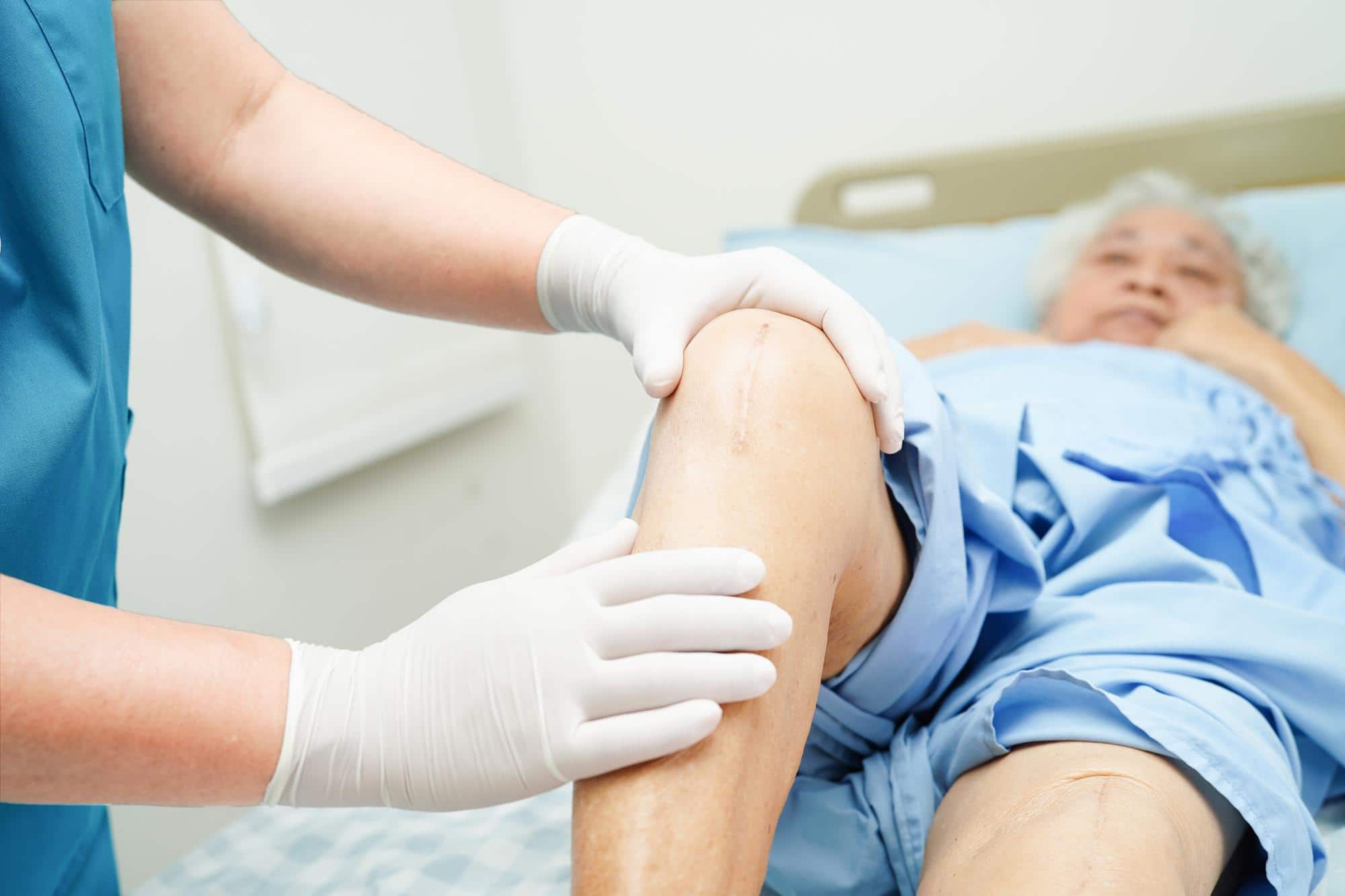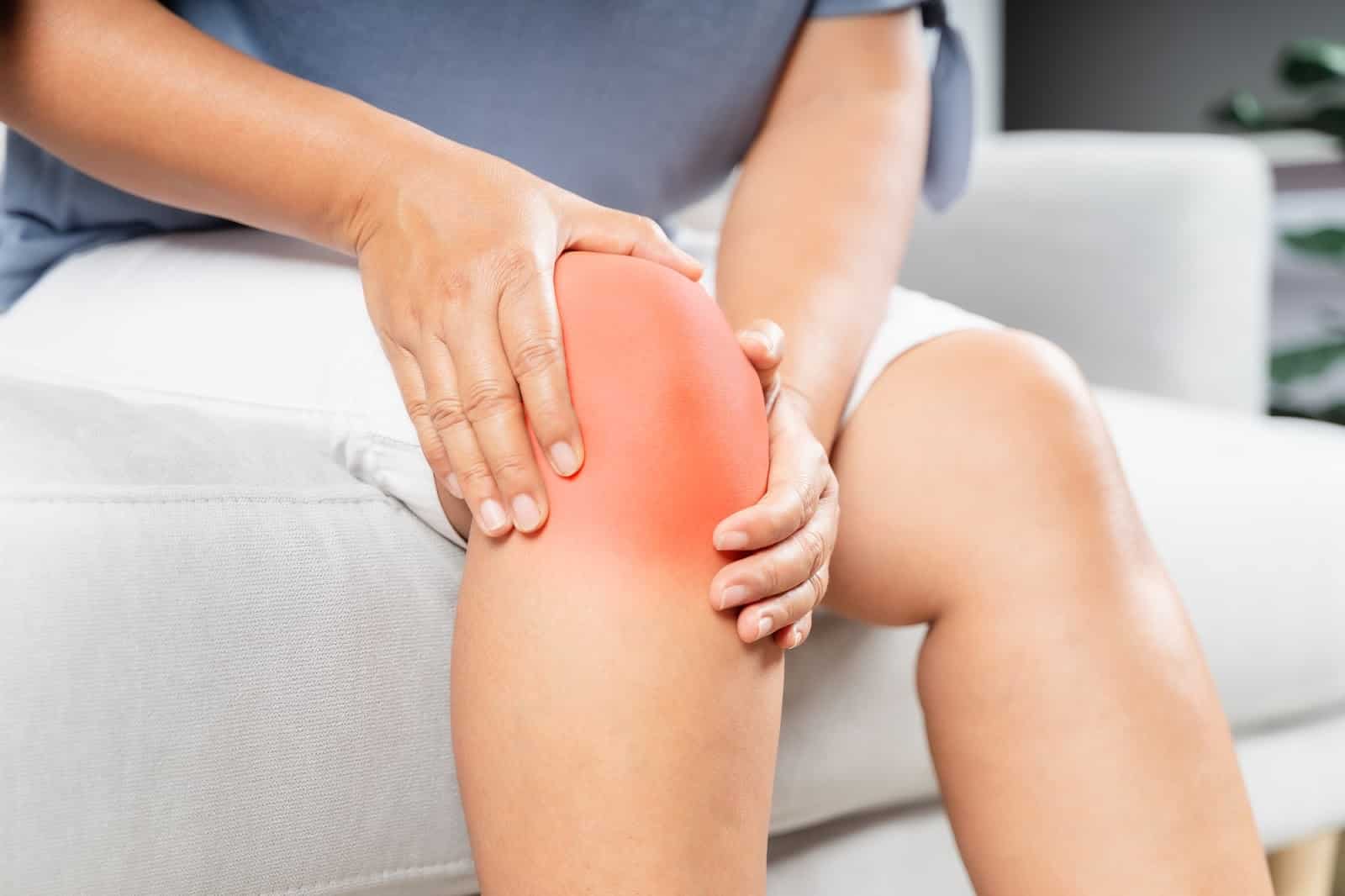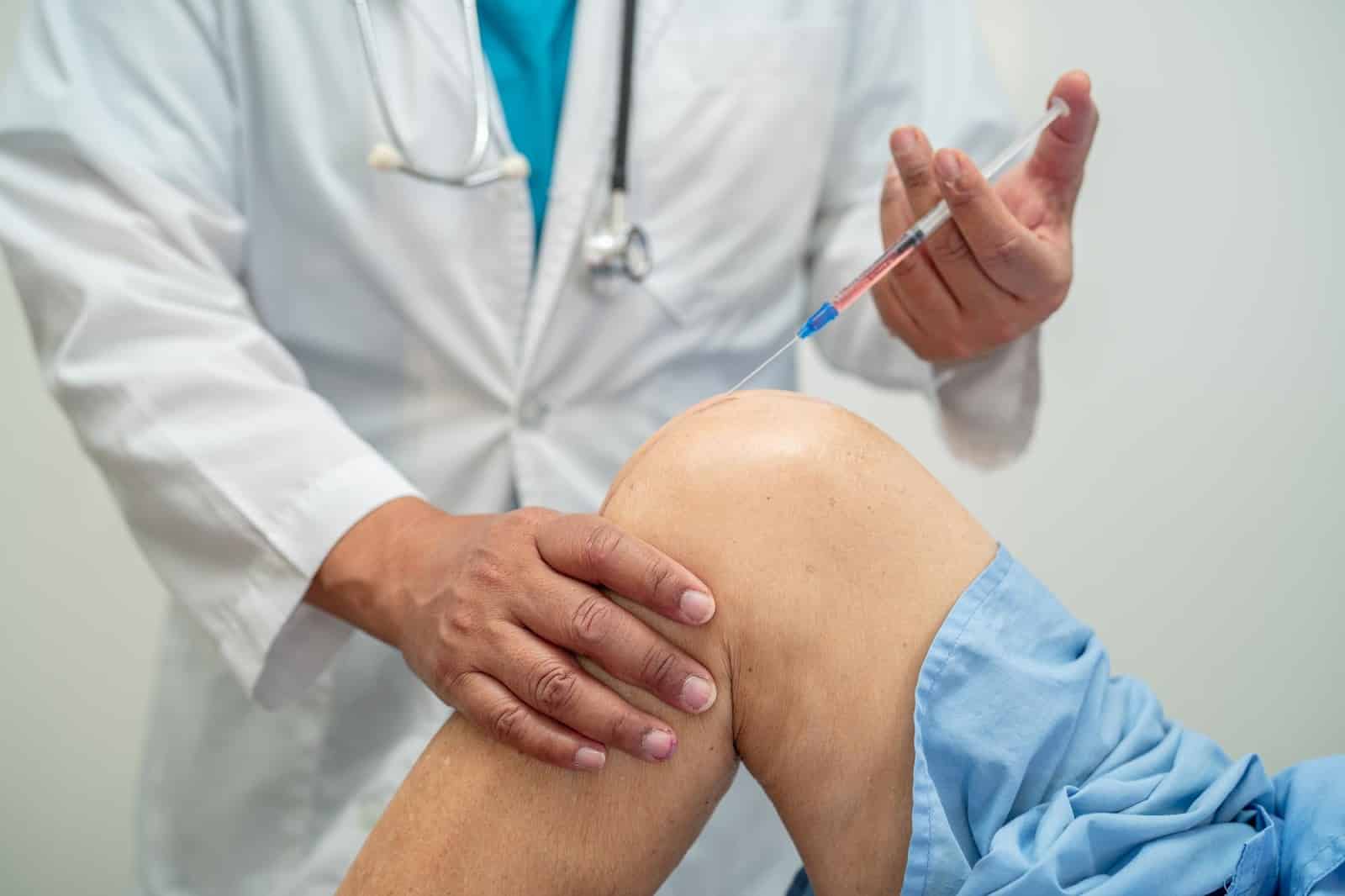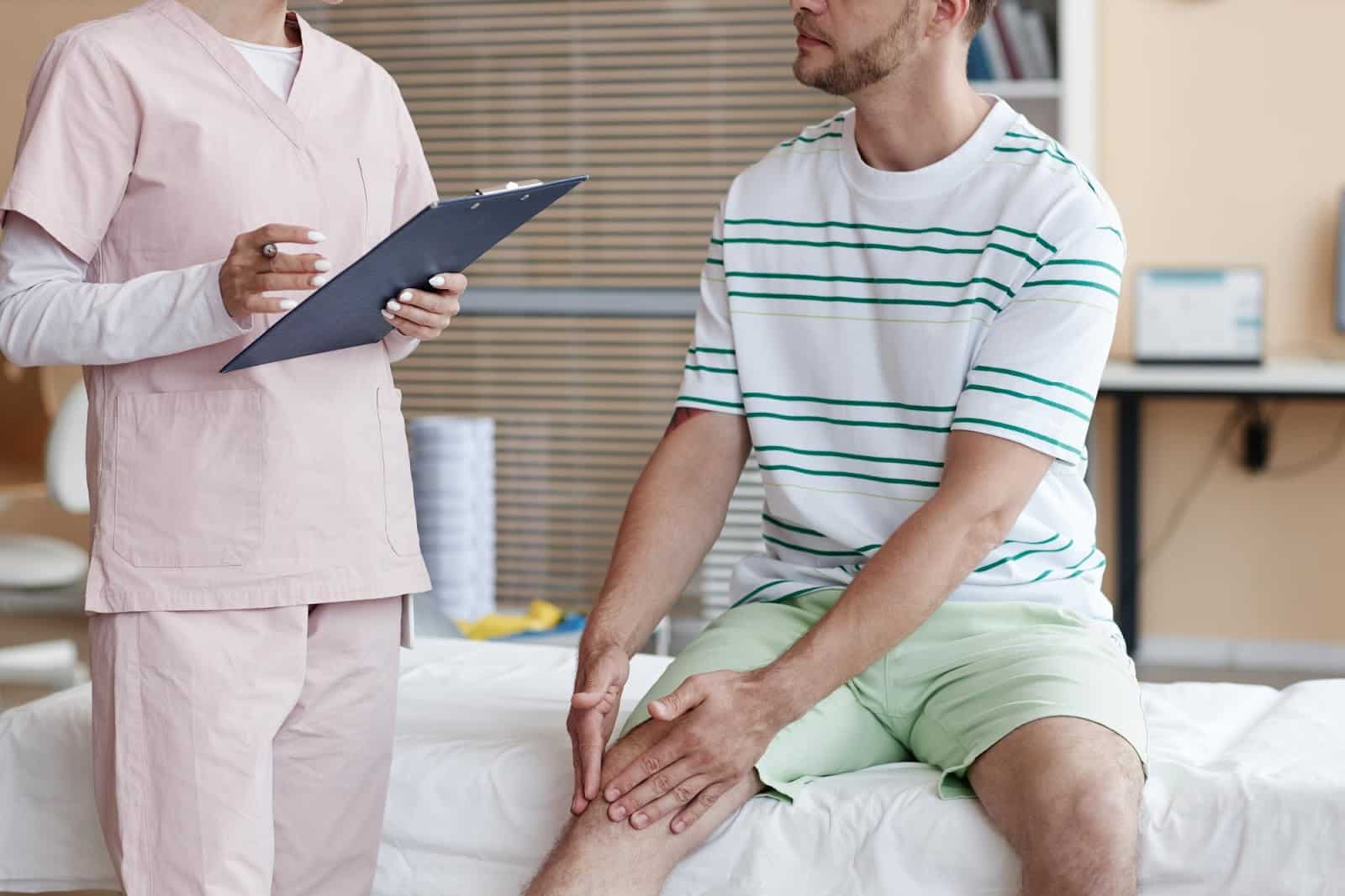
Did you know that there’s been a surge in knee osteoarthritis (OA) diagnoses worldwide in the past decades? The Rheumatologist reports that over 14 million people in the United States have been diagnosed with knee OA in the past 20 years. This significant number has increased the demand for effective, minimally invasive treatment options like viscosupplementation.
Orthovisc represents a modern solution to this growing need for effective OA management. These injections aim to restore the lubricating properties of synovial fluid within the joint as a viscosupplementation treatment. Similar to other viscosupplementation treatments, Orthovisc offers an alternative to traditional pain management methods for those seeking a non-surgical approach.
This article will explore Orthovisc’s typical recovery timeline, potential side effects, and aftercare instructions to ensure a smooth and successful healing process.
Key Takeaways
- Orthovisc injections are a type of viscosupplement designed to alleviate pain and improve joint function in individuals suffering from osteoarthritis, particularly in the knee joint.
- They offer a non-surgical option for managing osteoarthritis pain, which can particularly appeal to those who wish to avoid or delay surgery.
- The effectiveness of Orthovisc for conditions other than knee osteoarthritis has yet to be established, and patients must discuss its use in other joints with a healthcare provider.
- After the treatment, patients should follow their doctor’s post-care instructions to achieve optimal results and avoid delays in healing.
What Are Orthovisc Injections?
Orthovisc injections are a medical treatment designed to alleviate pain and improve joint function in individuals suffering from osteoarthritis, particularly in the knee joint. This therapy falls under a category known as viscosupplementation, where an expert injects a gel-like substance into the joint space.
Composition of Orthovisc Injections
Orthovisc is a brand name for a type of viscosupplement made of highly purified sodium hyaluronate. Hyaluronan, or hyaluronic acid, is a naturally occurring substance found throughout the body, with high concentrations in the joints. It acts like a lubricant and shock absorber, allowing smooth joint movement. In osteoarthritis, the quality and quantity of natural hyaluronan in the joint diminish, contributing to pain and stiffness.
The hyaluronan used in Orthovisc is a high molecular weight version, critical to its effectiveness. It is produced through bacterial fermentation, ensuring high purity and consistency.
How Orthovisc Injections Work to Alleviate Joint Pain

Orthovisc treatments provide relief from joint pain in two ways. First, by supplementing the hyaluronan in the synovial fluid, Orthovisc helps restore the fluid’s natural viscoelastic properties. This effect allows for better joint lubrication, reducing friction and wear on the articular cartilage surfaces.
Secondly, the increased viscosity provided by the Orthovisc injection can help to absorb and distribute mechanical loads more evenly across the joint. This shock-absorbing effect can reduce the impact on the joint during movement, thereby alleviating pain and discomfort associated with osteoarthritis.
Patients typically receive injections, which happen over several weeks. The treatment’s effects can last several months, providing significant relief from pain and improving the quality of life for those affected by joint degeneration.
Orthovisc injections are generally well-tolerated, but as with any medical procedure, there are potential risks and side effects. Patients need to discuss these with their healthcare provider to determine if Orthovisc is the proper treatment for their condition.
Conditions Treated with Orthovisc Injections

Osteoarthritis is the main target for Orthovisc injections. Osteoarthritis is a degenerative joint disease characterized by the breakdown of cartilage, the smooth, cushioning tissue that covers the ends of bones within a joint. As the cartilage wears down, bones rub together, causing pain, stiffness, inflammation, and limited joint function.
Orthovisc injections aim to replenish and improve the quality of the synovial fluid, enhancing lubrication and potentially reducing pain and inflammation in the osteoarthritic knee. While Orthovisc has FDA approval for treating knee osteoarthritis, its use may also benefit other joints affected by similar degenerative changes. These include:
- Hip Osteoarthritis: The breakdown of cartilage in the hip can cause significant pain and stiffness, limiting mobility and daily activities. While Orthovisc is more common in treating knee osteoarthritis, Orthovisc injections for hips may offer some benefits. However, the evidence for hips is not as strong as for knees, and these injections are typically not the first-line treatment for hip osteoarthritis.
- Post-traumatic Arthritis: This type of arthritis can develop after a joint injury and shares some similarities with osteoarthritis.
- Rheumatoid Arthritis: This autoimmune disease causes inflammation and damage to multiple joints. While Orthovisc is not a first-line treatment, it might relieve pain in specific cases.
It’s important to note that further research hasn’t verified the effectiveness of Orthovisc for conditions other than knee osteoarthritis, and patients should open a conversation with a healthcare provider about its potential use in different joints.
Benefits of Orthovisc Injections for Managing Joint Pain
While not a permanent solution, Orthovisc injections offer several potential benefits for managing joint pain, particularly in osteoarthritis:
- Lubrication: The hyaluronic acid in Orthovisc acts as a lubricant in the joint, reducing bone friction and improving joint movement.
- Shock Absorption: As a shock absorber, Orthovisc helps cushion the joint during activities, reducing the impact on the joint and alleviating pain.
- Pain Relief: Many patients experience significant pain relief and improved joint function following Orthovisc treatment, which can last several months.
- Non-Surgical: Orthovisc injections offer a non-surgical option for managing osteoarthritis pain, which can particularly appeal to those who wish to avoid or delay surgery.
Patients must manage expectations with Orthovisc injections. While they can be very effective for some people, the results may vary. They typically provide pain relief that lasts for several months, but individuals may experience a shorter or longer duration of relief. Discussing these points with your doctor can help you decide if Orthovisc injections are the right option.
Pre-Treatment Consultation and Planning

Talking to your doctor before the Orthovisc injection helps you plan for a smooth recovery and set clear health goals. This consultation lets your doctor thoroughly evaluate your knee pain and overall health. This discussion helps your doctor determine if:
- Osteoarthritis is the primary cause of your pain: Orthovisc injections are most effective for pain from osteoarthritis. Your doctor will rule out other potential causes of knee pain to ensure this treatment is suitable.
- You’re a good candidate for the injections: Certain medical conditions or medications might make you ineligible for Orthovisc injections. Your doctor will assess your situation to ensure it’s safe for you.
- Patients have previously used alternative treatments: Healthcare professionals turn to Orthovisc after trying conservative measures like pain medication, physical therapy, or lifestyle modifications. Your doctor will discuss your treatment history and determine if Orthovisc is the next appropriate step.
Discussing Expectations, Potential Risks, and Aftercare Planning
The pre-treatment consultation is also an excellent opportunity to discuss your expectations, potential risks, and aftercare planning for Orthovisc injections. Here’s what you can expect to cover:
- Expected Benefits and Limitations: Your doctor will discuss the potential pain relief and improvement in joint function you might experience with Orthovisc injections. They will also manage your expectations by explaining that results can vary and it’s a temporary solution.
- Potential Risks and Side Effects: While generally safe, Orthovisc injections can cause some side effects, such as pain, swelling, redness, or bruising at the injection site. There’s also a minimal risk of infection. Your doctor will discuss these potential side effects and what to do if you experience them.
- Aftercare Instructions: Following the injection, your doctor will provide specific instructions on caring for your knee, such as applying ice, avoiding strenuous activities, and physical therapy recommendations.
Preparing for Your Orthovisc Injection
Once you and your doctor have decided that Orthovisc injections are the right treatment option for your knee pain, you can take some steps to prepare for the procedure.
- Medical History: Inform your healthcare provider about allergies, especially to bird products such as feathers, eggs, and poultry, and any history of joint infections.
- Medication Review: Discuss all medications you’re taking, including over-the-counter drugs and supplements, as you may need to stop taking specific medicines or supplements temporarily.
- Joint Effusion: If the knee is swelling, it may need to be drained before the injection to increase the effectiveness of the treatment.
- Skin Preparation: The injection site should be clean and skin disease-free. Avoid disinfectants containing quaternary ammonium salts, as they can react adversely with the hyaluronic acid.
It’s natural to have questions or concerns before undergoing a medical procedure. As previously mentioned, start by having a detailed discussion with your healthcare provider about the Orthovisc treatment, including what to expect during and after the procedure. Your provider should also inform you of the injection’s potential side effects.
Next, learn about the aftercare, including activity restrictions, and make sure you understand the schedule for any follow-up injections or appointments to monitor your progress. You can approach your Orthovisc treatment with confidence and peace of mind by being well-informed and prepared.
Immediate Post-injection Care
It’s normal to experience some pain, swelling, and bruising at the injection site for a few days after the procedure. Here are some tips to manage these discomforts:
- Ice Application: For the first 24 hours, apply ice (wrapped in a cloth) to the injection site for 20 minutes on and then 20 minutes off to decrease pain.
- Heat Therapy: After 24 hours, you may use heat to alleviate discomfort if needed.
- Pain Medication: Continue taking any pain medication as your healthcare provider prescribes.
- Monitor Symptoms: If pain, swelling, or bruising persists or worsens, contact your healthcare provider for further advice.
While experts do not recommend complete immobilization after Orthovisc injections, it’s vital to prioritize rest and modify your activities to allow your knee to heal. In the first 24-48 hours, avoid strenuous activities like running, jumping, or heavy lifting. These activities can put excessive stress on your knee and delay healing.
Gentle walking is encouraged to promote circulation and prevent stiffness in your joints. However, minimize stair climbing as much as possible, especially during the first day. Your doctor might recommend specific physical therapy exercises to improve your knee’s flexibility and range of motion. These exercises are typically gentle and focus on maintaining joint mobility, not strenuous workouts.
Long-Term Aftercare and Rehabilitation

After an Orthovisc injection, long-term aftercare and rehabilitation are crucial for maximizing the treatment’s benefits and ensuring joint health over time. Physical therapy exercises play a vital role in the rehabilitation process following an Orthovisc injection. These exercises help maintain and improve joint mobility and strength, supporting the joint’s overall function and aiding in pain management.
- Range of Motion Exercises: Gentle stretching and movements that take the joint through its full range of motion can help maintain flexibility.
- Strengthening Exercises: Targeted exercises to strengthen the muscles around the joint can provide better support and stability.
- Low-Impact Aerobic Activities: Walking, swimming, or cycling can improve cardiovascular health without putting excessive strain on the joints.
Guidelines for Resuming Regular Activities and Exercise Postinjection
Resuming regular activities and exercise after an Orthovisc injection should be gradual and performed with guidance from your healthcare provider. Here are some general guidelines:
- Initial Rest: Avoid strenuous activities and high-impact sports for at least 48 hours after the injection.
- Gradual Increase in Activity: As the knee begins to feel less stiff, slowly increase activity levels based on comfort and tolerance.
- Monitoring Response: Pay attention to how your knee responds to increased activity. If you experience pain or swelling, reduce the activity level and consult your healthcare provider.
- Regular Follow-Up: Schedule follow-up appointments with your healthcare provider to monitor your progress and adjust the treatment plan.
Conclusion
Orthovisc injections offer a valuable option for managing joint pain, particularly in osteoarthritis. Understanding the entire process, from pre-treatment consultation to long-term aftercare, empowers patients to navigate recovery and optimize their Orthovisc treatment outcomes. Open communication with healthcare providers throughout this journey is vital.
About: DoctorMedica is your trusted supplier of top-quality dermal fillers, viscosupplements, and more for your medical practice. We offer genuine products from leading brands at the lowest prices in the market. Whether you need a specific product or various options, we can help you find the best deals for your needs. Plus, you can enjoy our promotions and free shipping for orders over $500. With DoctorMedica, you can offer your patients the best results for less.
FAQs
1. Is Orthovisc safe?
Orthovisc is considered safe for knee pain due to osteoarthritis and has received FDA approval.
2. What happens after an Orthovisc injection?
After an Orthovisc injection, you might experience temporary soreness at the injection site, but gentle walking is encouraged. It’s essential to listen to your body and contact your doctor if any pain worsens.
3. Can I get Orthovisc for hips?
Orthovisc is primarily approved for treating knee osteoarthritis and is not FDA-approved for hip injections; however, some healthcare providers may use it off-label for hips. Discuss it with your doctor to understand the limitations and if the treatment applies to your case.
References
Nierengarten MB. New research shows knee osteoarthritis prevalence is rising. The Rheumatologist. https://www.the-rheumatologist.org/article/new-research-shows-knee-osteoarthritis-prevalence-is-rising/?singlepage=1
Eustice C. Why hyaluronic acid is injected into arthritic hips. Verywell Health. https://www.verywellhealth.com/is-hyaluronic-acid-injected-into-arthritic-hips-2552275
Home Care After a Hyaluronic Acid Injection. UW Health. https://patient.uwhealth.org/healthfacts/8207
Related Articles
Joanna Carr
Juvederm For Lips: Volbella Or Ultra Xc? Treatment Explained
Interested in learning more about Juvederm Volbella Or Ultra XC Treatment Options Explained? Browse Doctor Medica's comprehensive archive of blog post...
Joanna Carr
Cimzia for Pregnancy – Safety Considerations and Risks
Explore the risk-benefit analysis of continuing Cimzia during pregnancy. Understand the potential effects and safety measures to make informed decisio...
Joanna Carr
Artefill Vs Juvederm: Similarities And Differences Explained
Have an interest in learning about The Similarities And Differences of Artefill Vs Juvederm Explained? Browse Doctor Medica's extensive archive of blo...


